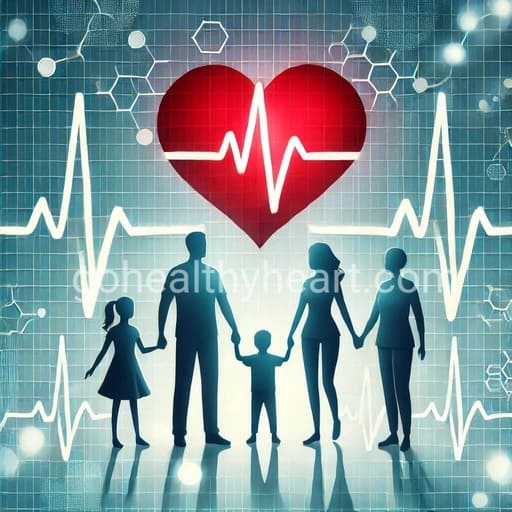Athlete’s Heart Syndrome: Causes, Symptoms and Solutions

Introduction
Athlete’s heart syndrome is a condition characterized by natural cardiac adaptations that occur in response to regular, intensive physical training. While these changes represent normal physiological adaptations, they can sometimes be mistaken for serious heart conditions, causing unnecessary concern among athletes and their families.
What is Athlete’s Heart Syndrome?
Athlete’s heart syndrome develops when the heart adapts to meet the increased demands of intense athletic training. These adaptations allow the heart to pump blood more efficiently, delivering enhanced oxygen supply to muscles during physical activity. The most significant changes include enlarged heart chambers (particularly the left ventricle), a lower resting heart rate often below 60 beats per minute, and increased cardiac output. The heart walls also thicken within normal adaptive ranges, enhancing the heart’s pumping efficiency.
These changes are physiological and typically reversible if training intensity decreases. For detailed information about these adaptations, refer to the comprehensive guide from MSD Manuals.
Causes and Development
Athlete’s heart syndrome primarily develops in individuals who engage in regular, intense physical training. This adaptation is most commonly seen in endurance sports such as long-distance running, swimming, cycling, and various professional team sports. The condition results from the heart’s natural response to consistent cardiovascular demands, leading to both structural and functional remodeling of the heart muscle.
Recognizing Symptoms of Athlete’s heart syndrome
While athlete’s heart syndrome is typically asymptomatic, some athletes might experience a notably slower resting heart rate, occasional mild fatigue after intense exercise, or possible light-headedness during extreme exertion. Heart rhythm changes may occur but usually resolve with rest. It’s important to note that these symptoms are generally benign in the context of athlete’s heart syndrome.
Diagnosis and Differentiation
One of the most critical aspects of athlete’s heart syndrome is distinguishing it from potentially dangerous heart conditions. According to the Cleveland Clinic’s diagnostic recommendations, diagnosis typically involves several key tests. An electrocardiogram (ECG) monitors electrical activity and identifies normal athletic adaptations while screening for concerning patterns. Echocardiograms evaluate heart size and structure, measure wall thickness, and assess overall heart function. In some cases, cardiac MRI provides detailed heart imaging, helping differentiate between physiological and pathological changes with precise measurements of heart structure.
Athlete’s Heart vs. Pathological Conditions
Understanding the differences between athlete’s heart syndrome and conditions like hypertrophic cardiomyopathy (HCM) is crucial. Recent research published on PubMed highlights several distinguishing features. In athlete’s heart syndrome, heart enlargement occurs proportionally, whereas HCM shows irregular thickening patterns. Athletic hearts demonstrate enhanced efficiency, while pathological conditions show compromised function. Perhaps most importantly, the changes in athlete’s heart syndrome reverse with detraining, unlike the permanent changes seen in pathological conditions.
When to Seek Medical Evaluation
Medical evaluation becomes necessary when an athlete experiences unexplained chest pain during or after exercise, fainting episodes (especially during physical activity), or irregular heartbeats that don’t normalize with rest. A family history of sudden cardiac death or unexplained shortness of breath also warrants professional assessment.
Management Guidelines
Regular cardiac screening remains essential for competitive athletes, incorporating annual physical examinations and periodic ECG monitoring, with echocardiograms and stress tests performed when indicated. Athletes with confirmed athlete’s heart syndrome can typically continue training safely by following gradual progression in training intensity, including adequate recovery periods, and maintaining proper hydration and nutrition.
Lifestyle Recommendations
Maintaining healthy cardiac adaptation requires attention to both training and recovery. Athletes should implement proper warm-up and cool-down routines while monitoring training intensity. Nutrition plays a vital role, with emphasis on adequate protein intake, complex carbohydrates for energy, and healthy fats for heart health. Proper hydration and electrolyte balance, combined with sufficient rest between training sessions, support optimal cardiac function.
Common Questions About Athlete’s Heart Syndrome
Athletes and their families often ask whether athlete’s heart syndrome can be prevented. As a natural adaptation to training, it doesn’t require prevention, but regular monitoring ensures safety. Many wonder about the permanence of the condition; importantly, these changes typically reverse if training intensity decreases significantly. Regarding athletic performance, these adaptations actually enhance performance by improving cardiac efficiency.
Conclusion
Athlete’s heart syndrome represents the remarkable adaptability of the human heart to intense physical training. While these changes can sometimes raise concerns, understanding the condition helps distinguish between normal adaptations and potentially serious cardiac issues. Regular monitoring and awareness of warning signs ensure athletes can train safely while maintaining optimal heart health.
Remember that this guide is for informational purposes only. Any concerns about heart health should be discussed with a qualified healthcare provider.



